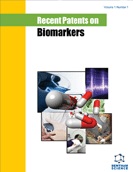Abstract
Hepatocellular Carcinoma remains a major fatal disease that is resistant to most cytotoxic therapeutics owed to the aberrant activation of signalling cascades. Recent patents reveal a new family of drugs that has been studied for molecularly targeting these cascades; multi-kinase inhibitors, are nowadays considered as novel therapeutic approaches. Therefore in this study, we aimed at investigating the impact of Imatinib mesylate, a tyrosine kinase inhibitor, on Human Hepatoma (HuH-7) cellular behavior and specifically its effect on p53 tumor suppressor gene. HuH-7 cells were transfected with a reporter vector containing a specific enhancer element that is activated upon binding to intracellular p53; consequently downstream luciferase reporter gene is activated. Cells were treated with Imatinib and we looked for p53 induction upon drug stimulation. Additionally; viability, metabolism, proliferation and apoptosis were evaluated. Upon Imatinib treatment, p53 expression showed a significant increase represented in increased luminescence. Moreover; a decrease in cellular viability and metabolic activity along with a considerable inhibition of proliferation and a vast increase in Caspase 9 activity were observed when compared to untreated cells. This study suggests that the effects of Imatinib mesylate might be attributable to enhanced active p53 in HuH-7 cells with consequent reduction in cancer progression properties. The article also summarizes some recent relevant patents.
Keywords: Hepatocellular carcinoma, HuH-7, imatinib mesylate, luciferase reporter gene, molecular targeted therapy, p53, MAPK, Gastrointestinal Tumors, Functional Integrity Assay
 18
18

